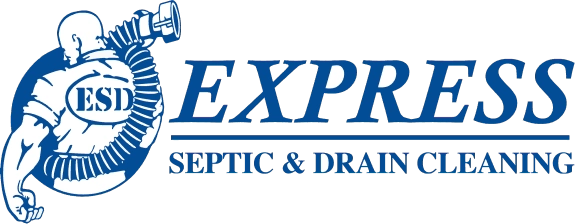When it comes to maintaining your septic system in Nampa, ID, the significance of septic tank risers cannot be overstated. Septic tank risers extend from the top of your septic tank to the ground surface, providing easy access for inspections and repairs. Without a riser, accessing your septic tank would require extensive digging, which can be both time-consuming and costly. By installing a quality septic tank riser, you not only protect your septic system from potential damage but also make routine maintenance simpler and more efficient.
Septic Tank Riser Materials
Before installing a new septic tank riser at your Nampa home, it is crucial to understand how different materials will affect the riser’s functionality. While searching the market, you can find plastic, concrete, and fiberglass septic tank risers for sale.
Plastic
Plastic septic tank risers are the most affordable option, which makes them a popular choice among Idaho homeowners. Alongside their affordability, they offer advantages like lightweight construction and ease of installation.
For those prioritizing corrosion resistance, plastic risers are a smart investment thanks to their superior capabilities in this regard. While plastic risers may not match the durability of concrete ones, they are often more readily available in the correct dimensions to fit your property’s septic system.
Concrete
If durability is your top priority when choosing a septic tank riser, then concrete risers are the best option. Known for their remarkable longevity, concrete risers can withstand the pressure from vehicles or machinery that might be present in the area. Additionally, concrete risers are corrosion-resistant, ensuring they remain functional and intact over time. While they may come at a higher initial cost compared to plastic risers, the long-term benefits of durability and strength often justify the investment.
Fiberglass
Fiberglass septic tank risers are also an appealing option. They combine the durability of concrete risers with the lightweight nature of plastic risers. However, the downside of selecting a fiberglass septic tank riser is the upfront expense, as they typically cost more than both plastic and concrete risers. Despite the higher initial investment, many homeowners find the combination of durability and ease of installation to be worth the cost.
Installing a Septic Tank Riser
The material you choose for your septic tank riser will significantly affect the installation process. Additionally, the layout of your property’s septic system will play a role in how the installation is carried out. Generally, the first step a septic professional will take is to cut a hole at the top of your septic tank. Once the opening is created, the riser is secured to it.
It’s highly recommended to have a professional install your septic tank riser. Improper installation can lead to leaks and other issues. A skilled professional possesses the right equipment and expertise to ensure a proper installation. Although hiring a professional might seem more costly initially, it’s a cost-effective choice in the long run as it helps avoid potential problems and additional repair costs.
Do You Need a Riser?
Septic tank risers aren’t mandatory for every home, but they offer several significant benefits that can make them a worthwhile addition. Assessing your specific needs and circumstances can help determine if a riser is the right choice for your property.
Advantages of Septic Tank Risers
Longevity is one of the best things about installing a septic tank riser. A durable and properly installed riser can allow your property’s septic system to operate as intended for a longer period of time. Heavy rain and the weight of large vehicles are two potential damage sources that a riser can protect your septic tank from. Future repairs will also be a less likely occurrence, which ultimately saves you money.
As far as maintenance is concerned, this is where a septic tank riser truly shines. Without one, each septic system inspection would involve an extra step: digging. With a riser present, though, all a septic professional must do to access your Nampa residence’s septic tank is simply remove a cover. Aside from making septic tank inspections shorter and more affordable, a good septic tank riser also allows for accelerated repairs if your tank requires any.
Disadvantages of Septic Tank Risers
A septic tank riser’s appearance is one of the most common reasons that local homeowners may be hesitant to install one. While a well-designed riser won’t stick out too much from your yard’s landscaping, there are still people who simply dislike how they look. Purchasing a decorative cover is one simple way to make your septic tank’s riser look a little nicer.
Something else that influences the decision of whether to install a septic tank riser is the upfront expense. This is an investment that some homeowners may not be interested in making yet. Keep in mind, though, that the long-term costs of maintaining a septic tank will actually be lower with a riser present since that will enable easy access.
Proper Septic Tank Riser Maintenance
Regular maintenance of your septic tank riser ensures its longevity and functionality. Frequently inspect your riser for signs of corrosion, leaks, or cracks, as these issues can compromise its watertight seal and reduce its lifespan.
Pay particular attention to the riser’s seal. If the seal deteriorates, not only can liquids escape, but gases and foul odors may also emanate from your septic tank. Regularly checking and maintaining the seal will help prevent these problems and keep your system operating smoothly.
Additionally, keep the area around the riser clear of debris such as dirt and leaves. Accumulated debris can obstruct access to the septic system, making inspections and maintenance more difficult. Promptly removing any debris will ensure easy access for your septic professional.
Just like the installation process, it’s wise to entrust the maintenance of your septic tank riser to a professional. Their expertise ensures that no potential issues go unnoticed, providing peace of mind and helping to extend the life of your septic system.
Are Septic Tank Risers Required?
Does your Nampa home’s septic tank have more than 24 inches of cover? If so, then a septic tank riser is mandatory. According to Idaho Public Health regulations, any septic tank with more than 24 inches of cover must have a riser.
This is crucial information if you are preparing to install a new septic system at your Nampa property. Regardless of the depth of your septic tank, the addition of a riser is highly beneficial. Additionally, all septic tanks in Idaho must be at least 5 feet away from the nearest building, with or without a riser.
Contact Us Today
Express Septic & Drain Cleaning serves the Nampa area with pride. Handling your septic service needs in a timely manner is our top priority. This led the Better Business Bureau to give us an A+ rating. As a locally owned septic and drain cleaning company, Express Septic & Drain Cleaning offers much more than just riser installation. When it comes to septic tanks, we tackle everything from location and pumping to inspection and testing. Our clients also depend on us for enzyme treatments, preventative maintenance, and well and water testing.
If you are ready to install a septic tank riser at your Nampa property, then get in contact with Express Septic & Drain Cleaning today.



